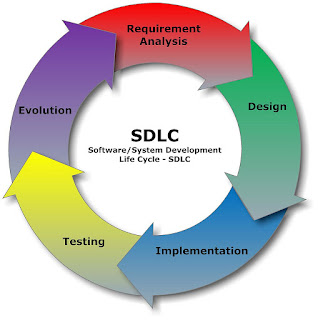El fracaso
no está en caer, sino en no levantarse después de la caída.
-Anonymous
· Suppose
if $10M transferred out of one banking system?
· Loss
of intellectual property - $2M in one
case,
the entire company in another?
· Your
PC's showing virus and malfunctioning?
· Your
account shows nil credit and you have $1M in your account?
These are the most cyber freaks happen in day to day
life and think for a second ... R U SAFE???
You can't stop natural calamities but prepare your
safety drills.
Just like if you think that you are fully secured by
hackers, viruses, spam etc. then it's wrong, because there is always bypass
method to unlock the security.
So, doesn’t worry tighten up your security and
secure yourself by following safety instructions.
Hello everyone, I Sourav Poddar here once again to
show you some basic tips n tricks. I push more peter sweeter and more competer
then any other peter pusher around to give best, pleased to see an excellent
response and appreciation on my blog .Thank you all for appreciating it.
So coming over topic ,this time I would like to
share the hot one “Network Security” .So
let’s get start friends, I hope that you all are now aware about Ethical
concept on Hacking, windows basic, keyboard Shortcuts ,Cloud Computing,Serach
engine .So, fasten your seat belt because
now i am give you tips over Network Security
.
1. Introduction on
Network Security.
2. Attack Trends.
3. Safety Drill.
4. Contact me.
As you all know network security has become more
important to personal computer users, organizations, and the military. With the
advent of the internet, security
became a major concern and the history of security
allows a better understanding of the emergence of
security technology. The internet structure itself
allowed for many security threats to occur. The
architecture of the internet, when modified can
reduce the possible attacks that can be sent across
the network. Knowing the attack methods, allows
for the appropriate security to emerge. Many
businesses secure themselves from the internet by
means of firewalls and encryption mechanisms.
The businesses create an “intranet” to remain
connected to the internet but secured from
possible threats.
The entire field of network security is vast and in
an
evolutionary stage. The range of study
encompasses a brief history dating back to
internet’s beginnings and the current development
in network security. In order to understand the
research being performed today, background
knowledge of the internet, its vulnerabilities,
attack
methods through the internet, and security
technology is important and therefore they are
reviewed.
of intellectual property that can be easily acquired
through the internet.
There are currently two fundamentally different
networks, data networks and synchronous network
comprised of switches. The internet is considered a
data network. Since the current data network
consists of computer-based routers, information
can be obtained by special programs, such as
“Trojan horses,” planted in the routers. The
synchronous network that consists of switches
does not buffer data and therefore are not
threatened by attackers. That is why security is
emphasized in data networks, such as the internet,
and other networks that link to the internet.
The vast topic of network security is analyzed by
researching the following:
1. History of security in networks
2. Internet architecture and vulnerable
security aspects of the Internet
3. Types of internet attacks and security
methods
4. Security for networks with internet access
5. Current development in network security
hardware and software
Based on this research, the future of network
security is forecasted. New trends that are
emerging will also be considered to understand
where network security is heading.
***************
When developing a secure network, the following
need to be considered :
1. Access – authorized users are provided the
means to communicate to and from a
particular network.
2. Confidentiality – Information in the network
remains private.
3. Authentication – Ensure the users of the network
are who they say they are4. Integrity – Ensure the message has not
been modified in transit.
5. Non-repudiation – Ensure the user does not
refute that he used the network.
********************
2. Attack Trends :
When it comes about safety of your databases, then
you try to take all types of secure parameters but still let me make you aware
about some unwanted attacks that takes place sometimes that causes loss of your
databases.
We all know about viruses,spam,junk etc.
But you know how make this attacks ?
Their formation ?
What parameter they use to attack ?
Dn’t worry ,I will explain you everything one by one
J
First of all let me tell you that how many types of
attacks took place .Generally, different authors, technical experts, blogger
have different
Ideas about this topic but I find out that there are
mainly two types attacks :
1. Active
2. Passive
Now the sub parts of active and passive attacks
follows:
•Passive attacks
# Interception.
# Release of message contents.
# Traffic analysis.
•Active attacks
# Interruption, modification, fabrication.
# Masquerade.
# Replay.
# Modification.
# Denial of service.
#exploiting passwords and poor configurations.
# Software bugs.
# Trojan horses.
# Sniffers.
# IP address spoofing.
# Toolkits.
# Distributed attacks.
Eavesdropping
Interception of communications by an
unauthorized party is called eavesdropping. Passive
eavesdropping is when the person only secretly
listens to the networked messages. On the other
hand, active eavesdropping is when the intruder
listens and inserts something into the
communication stream. This can lead to the
messages being distorted. Sensitive information
can be stolen this way.
***************
Viruses
Viruses are self‐replication
programs that use files
to infect and propagate . Once a file is opened,
the virus will activate within the system.
********
Worms
A worm is similar to a virus because they both are
self‐replicating,
but the worm does not require a
file to allow it to propagate . There are two main
types of worms, mass‐mailing worms and networkaware
worms. Mass mailing worms use email as a
means to infect other computers. Network‐aware
worms are a major problem for the Internet. A
network‐aware
worm selects a target and once the
worm accesses the target host, it can infect it by
means of a Trojan or otherwise.
***********
Trojans
Trojans appear to be benign programs to the user,
but will actually have some malicious purpose.
Trojans usually carry some payload such as a virus.
************
Phishing
Phishing is an attempt to obtain confidential
information from an individual, group, or
organization . Phishers trick users into disclosing
personal data, such as credit card numbers, online
banking credentials, and other sensitive
information.
********
IP
Spoofing Attacks
Spoofing means to have the address of the
computer mirror the address of a trusted computer
in order to gain access to other computers. The
identity of the intruder is hidden by different
means making detection and prevention difficult.
With the current IP protocol technology, IPspoofed
packets cannot be eliminated.
***********
Denial of Service
Denial of Service is an attack when the system
receiving too many requests cannot return
communication with the requestors . The
system then consumes resources waiting for the
handshake to complete. Eventually, the system
cannot respond to any more requests rendering it
without service.
*********
3. Safety Drill :
The best part of network security is Cryptography:
Cryptography (or cryptology;
from Greek κρυπτός,
"hidden, secret"; and γράφειν, graphein, "writing",
or -λογία, -logia,
"study", respectively) is
the practice and study of techniques for secure communication in the presence
of third parties (called adversaries).More generally, it is about constructing and
analyzing protocols that overcome the influence of adversaries and which are related to various aspects in information
security such as data confidentiality, data integrity, authentication and non-repudiation. Modern cryptography intersects the
disciplines of mathematics, computer science, and electrical
engineering. Applications of
cryptography include ATM
cards, computer passwords, and electronic
commerce.
(Source: WIkiPediA)
This is a pdf file which explain the
concept of cryptography.
http://www.cs.iit.edu/~cs549/lectures/CNS-1.pdf
2.2.2
Firewall
A firewall is a typical border control mechanism or
perimeter defense. The purpose of a firewall is to
block traffic from the outside, but it could also
beused to block traffic from the inside. A firewall is
the front line defense mechanism against
intruders. It is a system designed to prevent
unauthorized access to or from a private network.
Firewalls can be implemented in both hardware
and software, or a combination of both.
**********
Intrusion
Detection Systems
An Intrusion Detection System (IDS) is an additional
protection measure that helps ward off computer
intrusions. IDS systems can be software and
hardware devices used to detect an attack. IDS
products are used to monitor connection in
determining whether attacks are been launched.
Some IDS systems just monitor and alert of an
attack, whereas others try to block the attack.
************
Anti‐Malware Software and
scanners
Viruses, worms and Trojan horses are all examples
of malicious software, or Malware for short. Special
so‐called
anti‐Malware tools are used
to detect
them and cure an infected system.
**********
Secure
Socket Layer (SSL)
The Secure Socket Layer (SSL) is a suite of
protocols
that is a standard way to achieve a good level of
security between a web browser and a website. SSL
is designed to create a secure channel, or tunnel,
between a web browser and the web server, so
that any information exchanged is protected within
the secured tunnel. SSL provides authentication of
clients to server through the use of certificates.
Clients present a certificate to the server to prove
their identity
(Need to work on this topic, please give some reference
regarding SSL)
Sources
for writing this Topic :
1.Internet Sources:
·Wikipedia
·google
· www.redhat.com/docs/manuals/enterprise/RHEL‐4‐
Manual/security‐guide/ch‐sgs‐ov.html
·ethicalhacking1.com
·TOI
2.Books:
· Dowd, P.W.; McHenry, J.T., "Network
security: it's
time to take it seriously," Computer, vol.31
· CS595-Cryptography and Network Security
And Self sources
,friends and a lot from News and Magazines…
4. Contact:
LinkedIn: http://in.linkedin.com/pub/sourav-poddar/6b/542/a30
or mail me at
*Need your suggestions
and feedback, so that I can improve my way and ideas for coming ebooks and hope
that you appreciate it J
Thank YOU!!!
*****************
sponsered links:
http://www.000webhost.com/796711.html
http://www.lessoncorner.com
http://www.souravpoddar.com




Unpredictable Result bro.
ReplyDeleteGod bless U
Dng a great job..congo
ReplyDelete